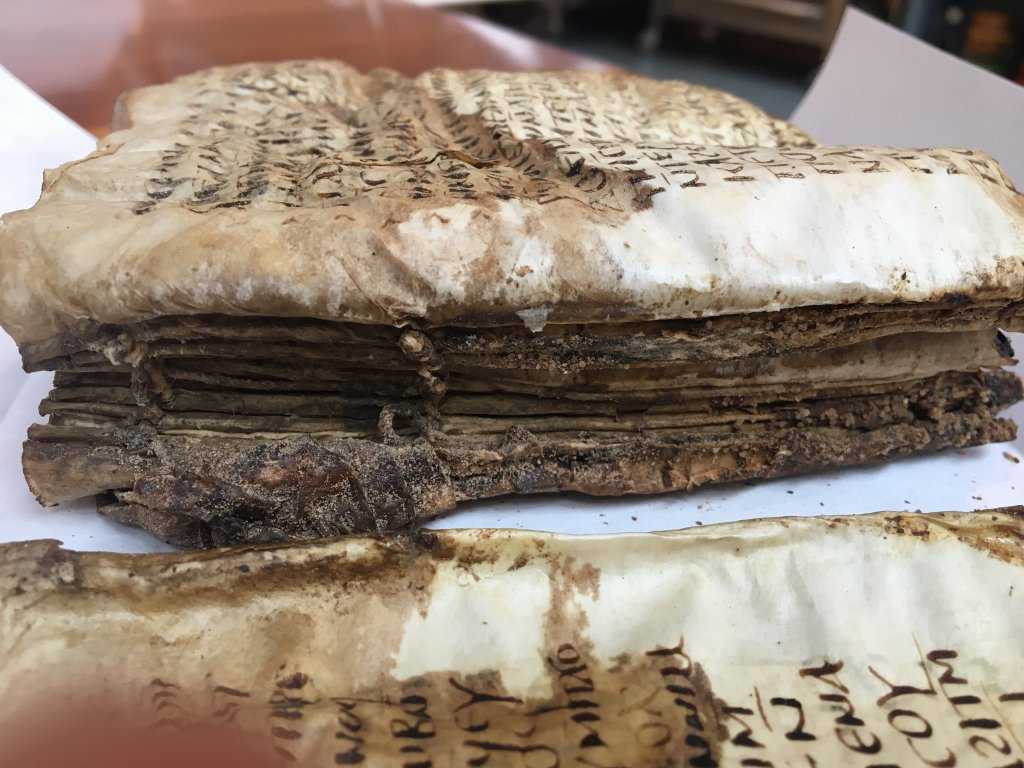There is mounting excitement over the revealing of a sealed ancient text that is likely to contain parts of an early version of the New Testament. The mysterious Christian manuscript known as M.910 will be will be viewed using an X-ray scanner – the pages of the ancient text are so fragile that researchers have been reluctant to risk touching them.

University of Kentucky computer scientist Dr. Brent Seales has developed software that can model the surface of a contorted piece of papyrus or parchment from X-ray data and then derive readable text by assigning letters to their proper surface.
M.910 has been preserved at New York City’s Morgan Library since the 1960’s, with researchers spending years figuring out how they could view the document without damaging it. Morgan’s lead book conservator, Maria L. Fredericks, has said that the text is not able to be transported from the library – she keeps a dish of bits that have fallen off the parched text since it arrived five decades ago.
The manuscript was written by Coptic monks in Egypt, possibly as early as the fourth century but more likely in the fifth or sixth, and it is believed to contain an early version of the Acts of the Apostles, the fifth book found in the New Testament.
“We can’t be sure [what’s in it], but every bit of evidence is precious, especially from a book this old—there aren’t many witnesses of the Bible from this period,” Paul Dilley, assistant professor of ancient Mediterranean religions at the University of Iowa, told Newsweek. “Every one of these ancient biblical manuscripts is a little bit different, so there are bound to be some interesting textual variants. It’s not out of the question that there’s another writing in the codex that we can’t see.”
X-ray images were taken back in December 2017, and are currently being processed ready for viewing. The number of pages, size of script and number of letters per page leads Dilley to believe that it is likely M.910 only contains the book of Acts, but he cannot be sure. The document might contain other Biblical texts or may contain a scribal note detailing who paid for the manuscript and when and where it was copied.
Dilley explained that the document suffered suspected fire damage that has caused it to warp, making it difficult to inspect. “Heat damage has caused it to shrink a little, but also the pages have…kind of warped together. It seems like an ember or something fell on it and burned it,” he said. Oh, and there’s another issue – the text is double-sided.
“Like some other codices, M.910 presents a unique challenge for Seales’ technique, for a deceptively simple reason: there’s writing on both sides of the parchment,” wrote Simon Reichley at MHP Books. “Most scrolls will typically have writing only on a single side, greatly simplifying the modeling process.”
Dr. Seales gained international recognition when he utilized his scanning techniques to “digitally unwrap” the ancient Hebrew En-Gedi scroll [50-100 CE] from Israel. Even Seales could not have expected to discover what he did. “It turned out to be an ancient Hebrew scroll that contained the earliest known instance of the Masoretic text, the most authoritative version of the Hebrew bible,” wrote Nicholas Wade at The New York Times.
Dr. Seales said his fascinating technique “can turn things thought to be of no value into precious objects.”
With that being said, the amount of legible text yielded from the scanning of M.910 remains to be seen.
“Whether we’ll be able to perfectly read the entire codex is doubtful, but a lot of the value will be in establishing this procedure [itself] and determining just how one goes about doing this,” Dilley said. “And reading and publishing some of it hopefully.”



